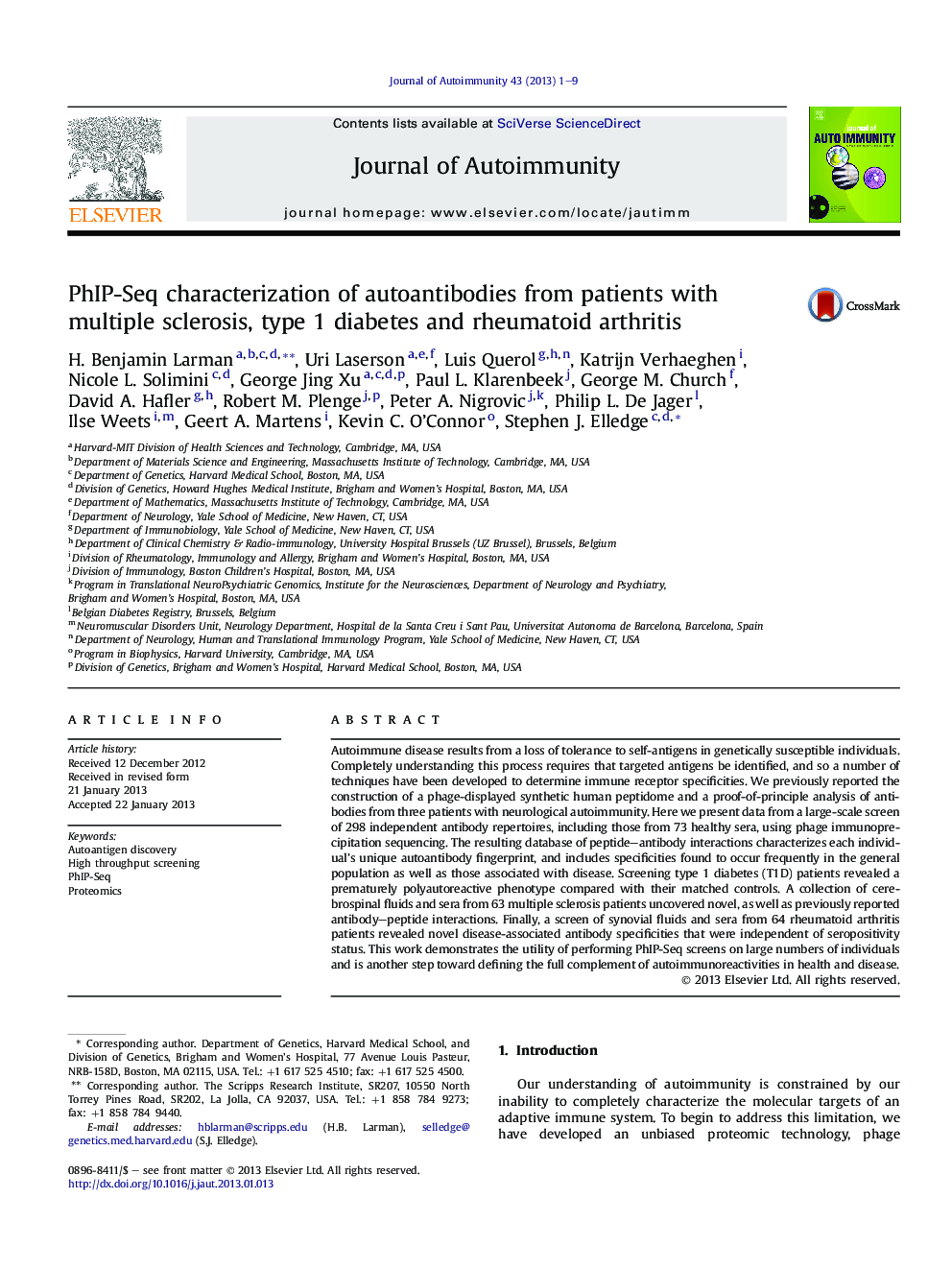| Article ID | Journal | Published Year | Pages | File Type |
|---|---|---|---|---|
| 3367799 | Journal of Autoimmunity | 2013 | 9 Pages |
Autoimmune disease results from a loss of tolerance to self-antigens in genetically susceptible individuals. Completely understanding this process requires that targeted antigens be identified, and so a number of techniques have been developed to determine immune receptor specificities. We previously reported the construction of a phage-displayed synthetic human peptidome and a proof-of-principle analysis of antibodies from three patients with neurological autoimmunity. Here we present data from a large-scale screen of 298 independent antibody repertoires, including those from 73 healthy sera, using phage immunoprecipitation sequencing. The resulting database of peptide–antibody interactions characterizes each individual's unique autoantibody fingerprint, and includes specificities found to occur frequently in the general population as well as those associated with disease. Screening type 1 diabetes (T1D) patients revealed a prematurely polyautoreactive phenotype compared with their matched controls. A collection of cerebrospinal fluids and sera from 63 multiple sclerosis patients uncovered novel, as well as previously reported antibody–peptide interactions. Finally, a screen of synovial fluids and sera from 64 rheumatoid arthritis patients revealed novel disease-associated antibody specificities that were independent of seropositivity status. This work demonstrates the utility of performing PhIP-Seq screens on large numbers of individuals and is another step toward defining the full complement of autoimmunoreactivities in health and disease.
► A high throughput autoantibody repertoire analysis was performed for 298 individuals. ► Individual, common and disease associated autoantibody targets are presented. ► Accelerated development of polyspecificity was found in T1D repertoires. ► CSF and sera from 63 MS patients were found to contain novel and known specificities. ► Synovial fluid and sera from 64 RA patients revealed novel autoantibody specificities.
